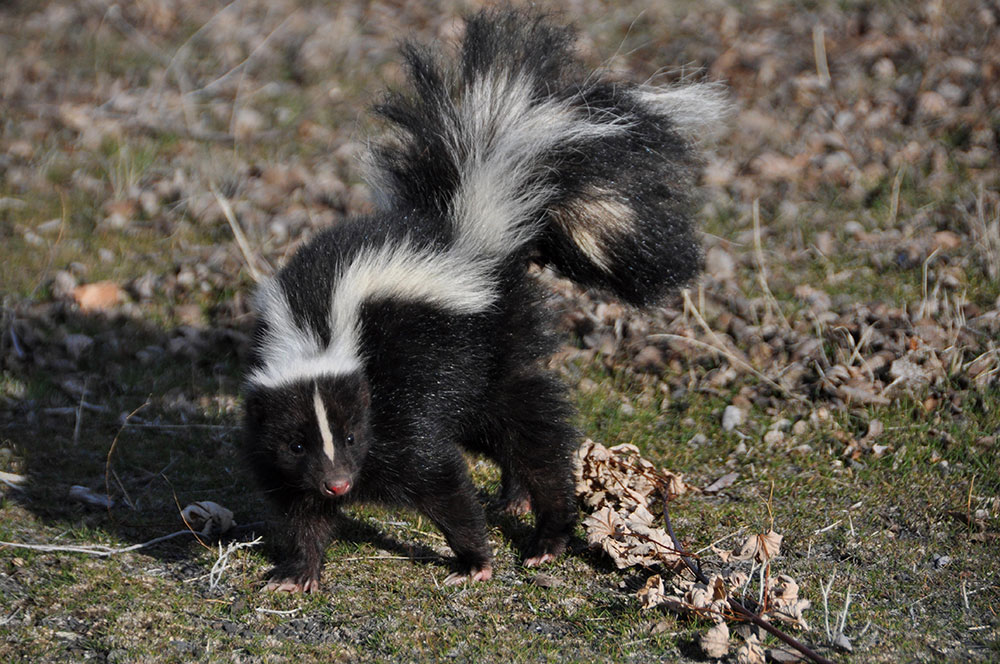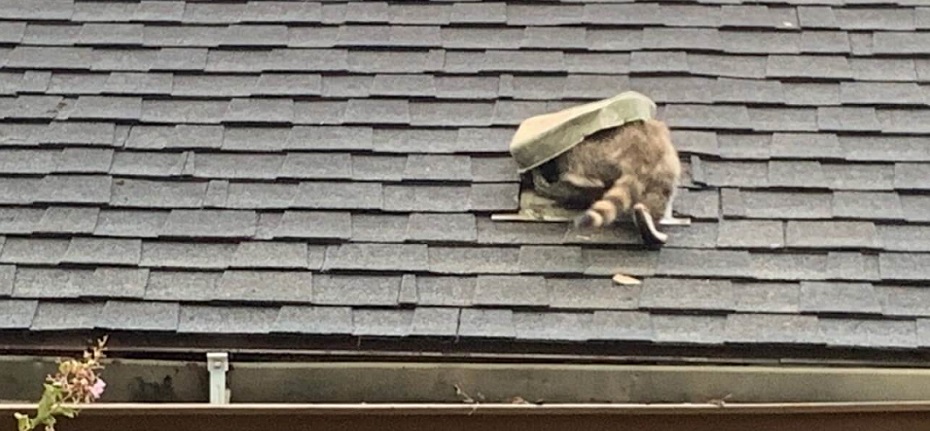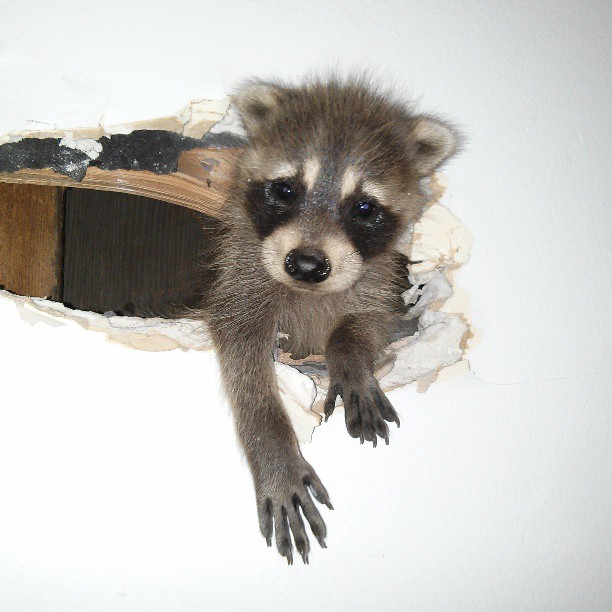There are several ways to identify the presence of a skunk on your property. The most obvious way to identify a skunk is seeing it. Skunks are generally 20-32 inches long with short legs and an unusual gait. They are known for their bushy tails and black and white stripes although species differ in their markings. Here are a few other ways skunks make their presence known.
Skunk Tracks
Skunks leave distinct tracks in dirt, mud, and snow. Skunks have five toes on each foot and claws that extend from each toe. The claws make deep tracks on the fore feet and differentiate skunk tracks from that of the common house cat, which can retract their claws. The hind foot leaves the mark of a heel pad that is usually between two and two-and-a-half inches.
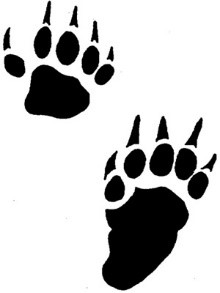
Skunk Scat
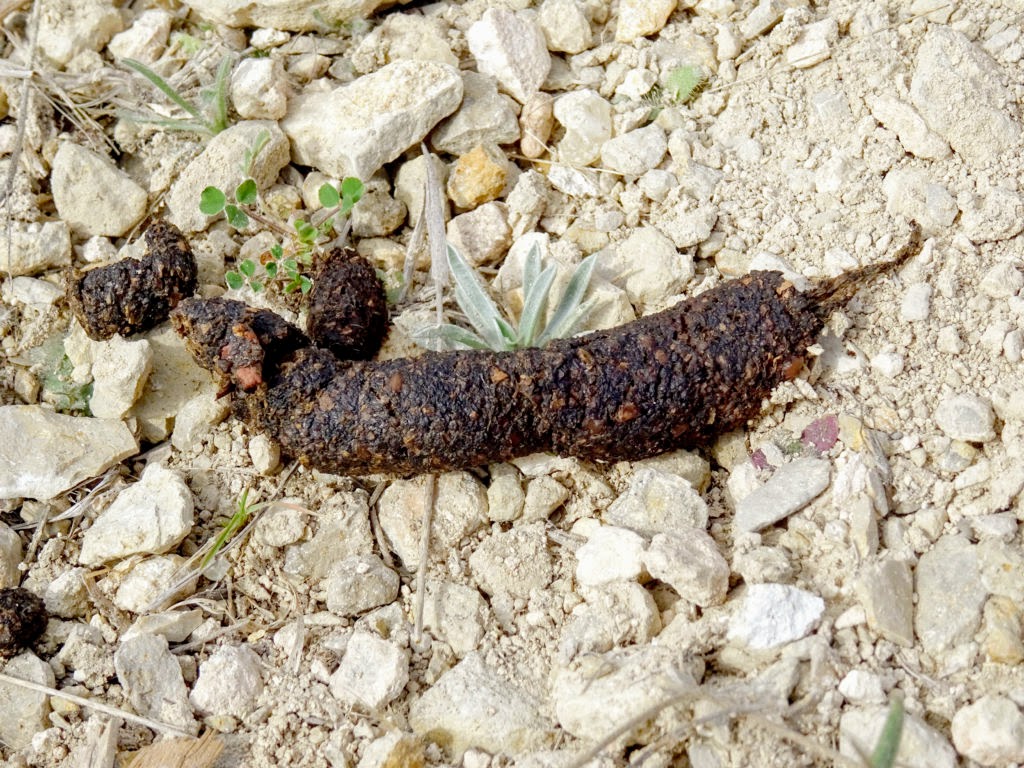
Skunk feces typically measures around half an inch in diameter and between one and two inches in length. Often compared to cat feces, skunk droppings can take on slightly different colors and shapes depending on the weather, the contents of their meals, and the length of time from the initial deposit. Skunk feces generally contains bits of undigested insects, berry seeds, fur, or feathers. Skunk feces can appear similar to raccoon feces but is typically smaller.
Skunk Holes
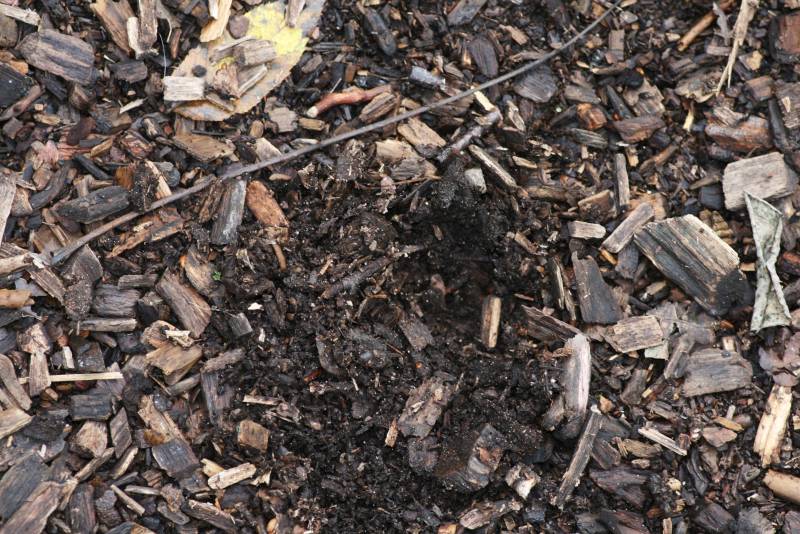
If you find small holes in your yard, it might be a skunk. A skunk diet consists of insects like grubs and worms. They dig small round holes looking for food. Skunks are more active after it rains. The water brings bugs closer to the service. If a series of holes appear in your yard after the rain, you might be attracting skunks.
Skunk Burrows and Dens
Skunks use their digging ability to build tunnels, dens, and forage for food on residential and commercial property. Their burrows are often found under buildings, sheds, decks, and even concrete foundations. Dens and tunnels built by skunks are marked by freshly excavated dirt and a strong odor. Holes dug by skunks for food are shallower and just a couple of inches in diameter.
Skunk Smell
Skunks are infamous for their pungent spray — an oil stored in their anal glands that can be sprayed up to 12 feet. Skunk spray includes chemicals known as thiols, which are compounds that contain sulfur. These chemical compounds give the liquid its musky stench, which can be smelled up to a mile away in certain conditions. Skunks typically use their spray as a last defence against predators. While the spray is rarely permanently harmful, it is extremely difficult to remove and can cause irritation to the skin and olfactory senses. Skunk spray can even cause temporary vision loss.
Skunk Sounds
Skunks are generally quiet, but they do growl, squeal, hiss, and stomp. Skunks typically use these sounds to signal distress. A pregnant skunk will use these sounds to warn approaching males. Homeowners might hear the tapping or scratching of skunk claws at night because the animals are nocturnal.
Skunk Control
If you believe a skunk is living in or around your house, the worst course of action would be to try to catch it yourself, unless getting sprayed by a skunk is terrible. Skunk spray is a defensive mechanism. Before they spray, they stamp their front feet as a warning. If you hear that, turn around.
When dealing with skunks, noise and light are very effective deterrent measures. Try placing a battery-powered radio tuned to an all-talk station outside of the den. You can also try consistently shining a light directly toward the den. These methods, especially if used in conjunction, will hopefully disturb the skunk enough to where it’ll start packing its bags.

